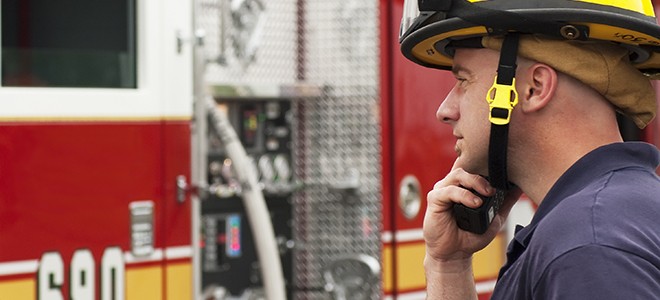Apartment fires in Canada are still all too common, despite the steeper fines for Fire Code infractions and persistent efforts by authorities and building stakeholders to mitigate fire hazards through education and emergency preparedness. As technology advances and buildings become better equipped to detect, contain and alert occupants of a pending hazard, the prevalence of fire-related tragedies are diminishing. Even older apartment buildings can benefit from new and improved technology.
Given October is National Fire Prevention Month, we reached out to Michael Hugh, Field Sales Engineer, Johnson Controls about smart, responsive fire systems and best practices for mitigating fire hazards in multi-residential buildings.
How has smart technology helped improve fire safety?
Smart technologies, such as integrated fire detection systems and sensors, can help improve fire safety within apartment buildings by communicating emergencies with occupants who could be impacted. Building codes require smoke alarms to be installed in each apartment unit, which provide a local-sounder to alert occupants of smoke or fire in the individual space. Modern-day fire alarm systems offer the option to replace traditional smoke alarms with individual “smart” smoke sensors. These sensors can serve each individual unit, but when connected to the building-wide fire alarm system, other building occupants – like residents, building managers and superintendents – could be notified in the event of an emergency.
These smart sensors can also identify carbon monoxide. CO is highly lethal, but because it is invisible, tasteless and odorless, it can be left unrecognized. When CO is detected in a unit, the building-wide fire alarm system can notify unit residents and building management, who could then take necessary actions to resolve the issue. This kind of system operation may provide a greater level of safety, especially for occupants who may face mobility challenges. When emergencies occur, it is crucial that integrated systems communicate to one another in all areas of the building, including fire alarm networks, mass notification systems, emergency lighting and HVAC controls.
What are some key steps all apartment owners/managers must take to prevent fires from spreading?
Fire safety begins with initial detection through the use of integrated systems. By connecting the building’s fire alarm network to all other technologies, each individual system is able to monitor and maintain their own status. Rather than utilizing disparate alarms for each individual unit or space, integrated systems are able to communicate to one another and act on emergencies as soon as they happen.
Mass notification and emergency communication systems can be connected with other systems, such as light sensors and HVAC sensors, to assist occupants as they navigate their way out of the building safely while alerting emergency response teams. This results in faster reaction times, ultimately saving lives and building assets from further destruction.
What are the most common sources of apartment fires?
According to the National Fire Protection Association (NFPA), cooking is the number one cause of apartment fires. Other sources of apartment fires can range from unattended fires, like candles and smoking, to arson. While fire safety education is key in preventing these types of fires, an integrated fire and life safety infrastructure can help. Should an emergency occur, sensors integrated with a mass notification system can alert occupants and use real-time insights to guide them to a safe location. When connected with an emergency communications system, local first responders can be notified immediately, reducing response times.
Is technology moving in a direction that fires in multi-residential buildings will someday become a thing of the past?
To say fires in multi-residential buildings will become a thing of the past is hard to predict; but, integrating fire and life safety solutions with additional building systems – like HVAC controls – can help reduce the spread of fires and improve emergency response times. Additionally, with the implementation of artificial intelligence (AI) and machine learning, predictive analytics can be useful in determining more efficient evacuation routes. For example, when a fire erupts and first responders react, the information provided by integrated building systems can help determine how, or if, occupants are evacuated out of the building.
Has there been one innovation in particular that has significantly raised the bar on fire safety?
Integrated fire and life safety technologies have enhanced fire safety within multi-residential buildings, but without the National Fire Code of Canada – a legal requirement and comprehensive reference guide for property owners and managers – buildings could be left vulnerable to life safety threats. The Fire Code is continuously improving safety standards to keep up with advancing technologies and ensure property owners are fulfilling testing and inspection requirements for the various fire and life safety features within their building. This includes, but isn’t limited to: fire sprinkler systems, fire alarm systems, fire extinguishers and emergency lighting.
Modern fire alarm systems retain historical data, which can serve as an electronic record of when fire alarm inspection companies have completed the work they professed to have done – and likely charged for. When a service team claims that they have tested every fire alarm detection device in the building, the log should have retained an entry for every one of those tests. For property owners who are liable if Fire Code requirements are not fulfilled, this data collection serves as a comprehensive record of when maintenance or inspections have been performed. This provides owners with greater insight into when another inspection will be required or when a sensor may need replacing, resulting in proper code compliance and safer, more efficient facilities.
for more information, visit: www.johnsoncontrols.com/fire-detection







